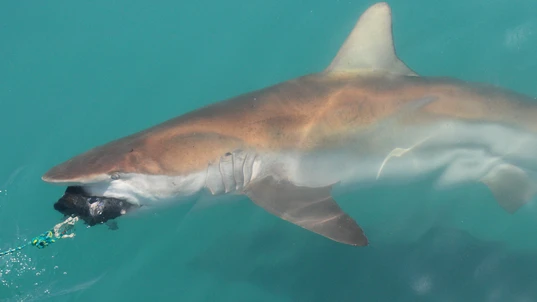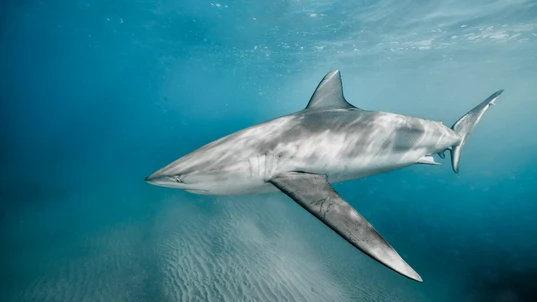Your Guide to Adelaide Sharks

Bites and Stings

The warmer weather has caused a spike in shark sightings off the coast of Adelaide. Developing an understanding of local shark populations, and what to do if you encounter a shark, could make the difference between life and death.
According to Surf Live Saving South Australia, there has been a recent spike in shark sightings off the Adelaide coastline. The warmer weather has seen several shark species enter the South Australian gulf to feed and give birth. To help keep you safe this summer, we are going to describe three shark species that are common to the Adelaide coastline, and what to do if you encounter one. We also cover shark attacks in our general and childcare first aid courses. We have training locations in Adelaide and in every other state, capital city, and major town throughout Australia - head to our website to enrol in a course near you today.
Great white sharks can be found in temperate waters across the globe. In Australia, they can be encountered from north-western Western Australia and across the southern coast as far north as central Queensland.
The Great white shark
The Great white shark (Carcharodon carcharias) is the largest predatory fish in the world. It has the following characteristics:- Average length of 15 ft (roughly 4.5 m), though some specimens have exceeded 20 ft (roughly 6 m)
- Generally weigh between 680 and 1,800 kg, though some specimens have exceeded 2,270 kg
- Their upper bodies tend to be blue- or slate-grey, while their underbellies are white
- Their body is shaped like a blunt torpedo - coupled with their strong, crescent-shaped tail, this can help them reach speeds of up to 24 km per hour

The Bronze whaler is typically encountered in the coastal and continental shelf waters of southern Australia.
The Bronze whaler shark
The Bronze whaler (Carcharhinus brachyurus) has the following characteristics:- They can measure up to 3.5 m and weigh up to 300 kg
- Their back can range from greyish-brown to bronze, while the tips of their pelvic and pectoral (side) fins tend to be darker
- The fins on their top and sides are large

Dusky sharks have a worldwide distribution in tropical and warm temperate waters. As well as being common to the Adelaide coastline, they can be found in all Australian coastal and continental shelf waters.
The Dusky shark
The Dusky shark (Carcharhinus obscurus) has the following characteristics:- They can measure up to 3.65 m and generally weigh between 350 to 400 pounds (roughly 158 to 182 kg)
- Their bodies are grey to grey-brown above and pale below
- They have a long pointed snout, long fins on their sides, and the fin of the top of their body tends to slope
Shark attack first aid
If you witness a shark attack, dial Triple Zero (000) for an ambulance, apply direct pressure or a tourniquet to any arterial bleeds, and treat for shock. More information about treating and preventing shark attacks can be found in our Resource Library.Final thoughts
Though shark attacks are relatively rare (in fact, you are more likely to die from a bee sting than from a shark attack), knowing how to treat and prevent shark attacks could make all the difference in the world. We also cover shark attacks in our general and childcare first aid courses. We have training locations in Adelaide and in every other state, capital city, and major town throughout Australia. Head to our website to enrol in a course near you today.
Originally published at
https://www.australiawidefirstaid.com.au/resources/adelaide-sharks
as part of the Australia Wide First Aid Articles Library









